The Enchanting Beauty of Jin Ci Temple: A Photographer’s Paradise
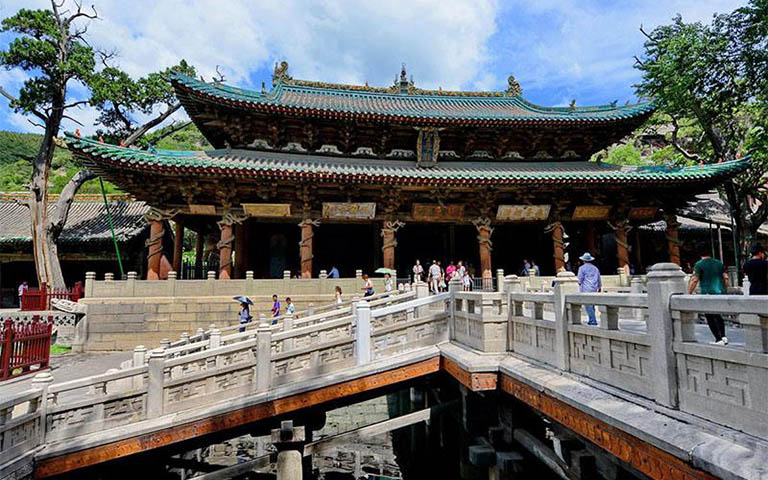
An Essential Guide to Visiting Jin Ci Temple
In This Guide
- An Essential Guide to Visiting Jin Ci Temple
- The Rich History and Legends of Jin Ci Temple
- Main Highlights: What You Absolutely Can’t Miss
- Planning Your Visit: A Practical Guide
- Tickets: Prices, Booking, and Tips
- How to Get There: A Complete Transportation Guide
- Local Cuisine and Accommodation Nearby
- Frequently Asked Questions
- Final Thoughts on Your Trip
Discovering the Timeless Allure of Jinci Temple
Nestled in the serene landscapes of Lingshi County, Jinci Temple (晋祠) stands as a magnificent testament to China’s rich historical and cultural heritage. A mere 24 kilometers from the vibrant city of Taiyuan, this ancient temple complex invites travelers to step back in time and immerse themselves in the beauty of Chinese architecture, spirituality, and artistry.
Established during the Northern Wei Dynasty and later expanded in the Song Dynasty, Jinci Temple is dedicated to the worship of the legendary figure, Shen Nong, the “Divine Farmer” who is often revered for his contributions to agriculture and traditional medicine. The temple’s stunning layout harmoniously blends with its natural surroundings, embodying the ancient Chinese philosophy of Yin and Yang. As you wander through its sprawling gardens and ornate halls, you will encounter intricate carvings, lush greenery, and the serene presence of ancient trees—some of which are over 3,000 years old.
Whether you’re a history buff, an art enthusiast, or simply in search of a peaceful retreat, Jinci Temple offers a unique experience that captures the essence of China’s spiritual and architectural magnificence. Prepare to be enchanted by this cultural gem, where every stone tells a story, and each pathway leads to a new discovery. As you explore, you will not only witness the beauty of the temple but also gain a deeper appreciation for the profound traditions that have shaped Chinese civilization for centuries.
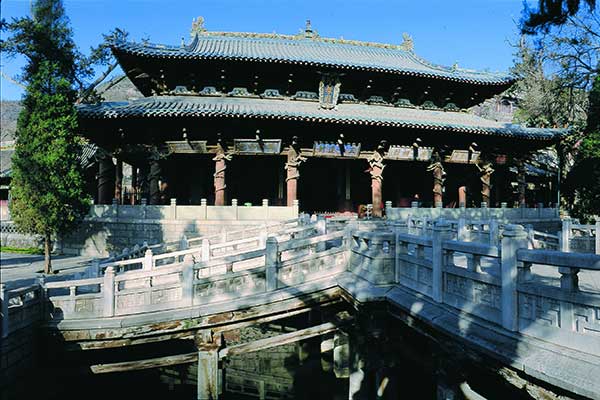
Jin Ci Temple.
The Rich History and Legends of Jin Ci Temple
Discovering the Legacy of Jinci Temple
Nestled in the picturesque Lingshi County of Shanxi Province, Jinci Temple (晋祠) is not just a site of architectural beauty but a storied landmark steeped in rich history and enchanting legends. Dating back over a millennium, this ancient temple complex serves as a testament to the spiritual and cultural evolution of China.
A Journey Through Time
Jinci Temple’s origins trace back to the Western Zhou Dynasty (1046–771 BC), making it one of the oldest temple complexes in the country. It was initially dedicated to Shen Nong, the legendary Emperor of Agriculture, who is revered for teaching the Chinese people about agriculture and medicine. However, it gained prominence in the Song Dynasty (960–1279 AD) when it was transformed into a shrine honoring the Mother of the Jin, the revered figure who represents the matriarchal spirit of the Jin state.

Jin Ci Temple.
The most significant structure within the complex is the Saint Mother Hall, built in 984 AD. This hall is a perfect embodiment of ancient Chinese architecture, showcasing intricate carvings and advanced craftsmanship that have withstood the tests of time. Visitors can marvel at the three-thousand-year-old cypress tree that stands sentinel over the grounds, a living connection to the temple’s ancient past.
Architectural Splendor
Jinci Temple is renowned for its blend of Daoist, Confucian, and Buddhist influences, reflecting the harmonious coexistence of these philosophies throughout Chinese history. The intricate wooden dragons entwined around the pillars, the serene gardens, and the ancient opera stages all contribute to the temple’s allure. The sprawling grounds are dotted with various pavilions and shrines, each telling its own story through stunning artistry and historical significance.
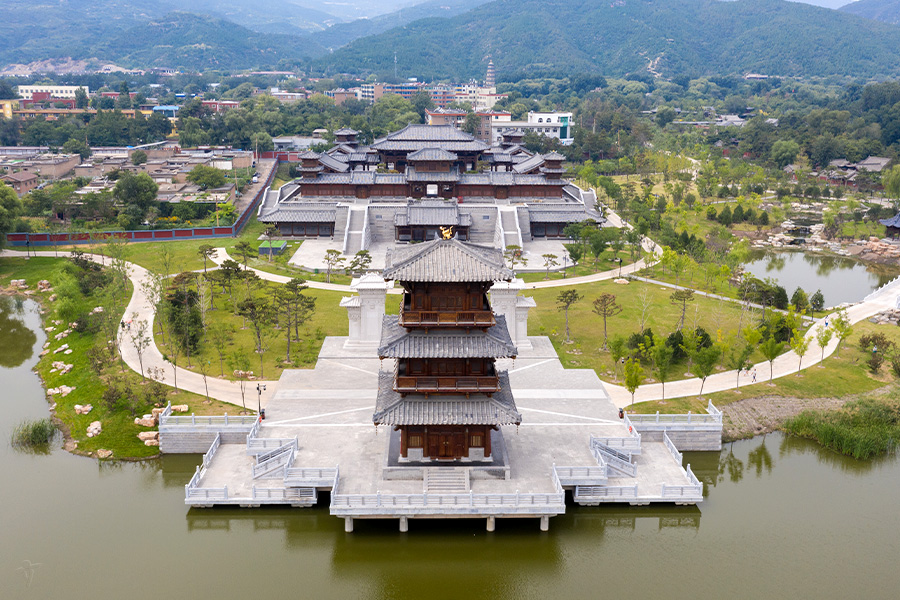
Jin Ci Temple.
Legends and Folklore
Jinci Temple is not only a historical site but also a canvas for legends that have been woven into its very fabric. One of the most captivating tales involves the Mother of the Jin, believed to have been a guardian spirit who protected the Jin state. According to legend, she would appear in times of crisis, leading her people to safety and prosperity. Her presence is felt throughout the temple, and many visitors come to pay their respects and seek her blessings.
Another popular legend speaks of the Cypress Tree of Eternal Life, located within the temple grounds. It is said that those who pray at this tree with a pure heart will be granted longevity and good fortune. This ethereal connection to health and prosperity has drawn countless visitors seeking both spiritual solace and a deeper understanding of the temple’s significance.
Cultural Significance
As you wander through the temple’s tranquil gardens and ancient halls, it becomes apparent that Jinci Temple is not merely a tourist attraction. It is a vibrant cultural heritage site that offers insights into the historical narratives that have shaped Chinese civilization. The temple complex has hosted numerous cultural events, rituals, and festivals, perpetuating its legacy as a center of worship and community.
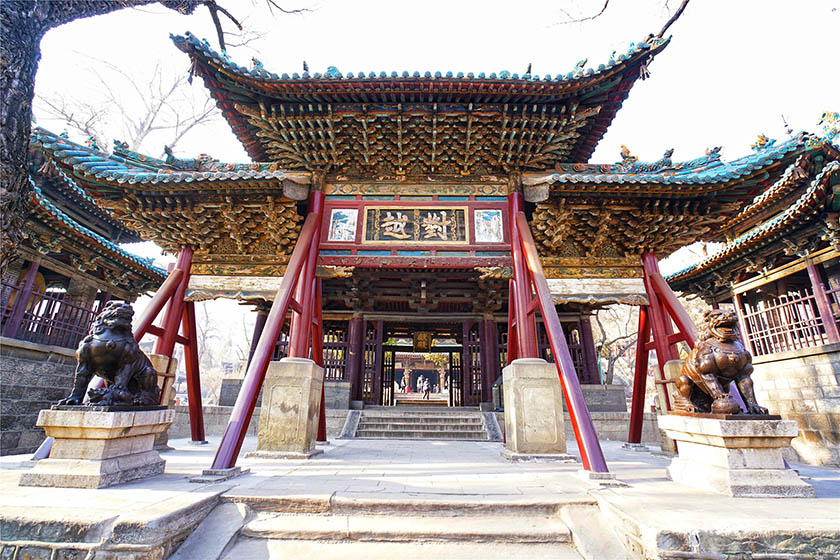
Jin Ci Temple.
In recent years, Jinci Temple has gained recognition as a Travelers’ Choice destination, celebrated for its breathtaking beauty and historical depth. Visitors often leave with a renewed appreciation for the intricate tapestry of Chinese history and a sense of connection to the legends that echo through its sacred grounds.
Conclusion
Visiting Jinci Temple is an invitation to step back in time and immerse oneself in the rich narratives of China’s past. Whether you are an avid historian, a culture enthusiast, or simply seeking a serene escape, the temple’s storied walls and lush landscapes promise an unforgettable experience that resonates long after your journey has ended.
Main Highlights: What You Absolutely Can’t Miss
Discovering the Majestic Jinci Temple: Unmissable Highlights
Jinci Temple (晋祠), nestled in the beautiful Lingshi County of Shanxi Province, is a treasure trove of Chinese history and culture. This ancient temple complex, known for its serene landscapes and architectural marvels, is a must-visit for any traveler keen on exploring the depths of China’s rich heritage. Here, we guide you through the main highlights that you absolutely cannot miss during your visit.
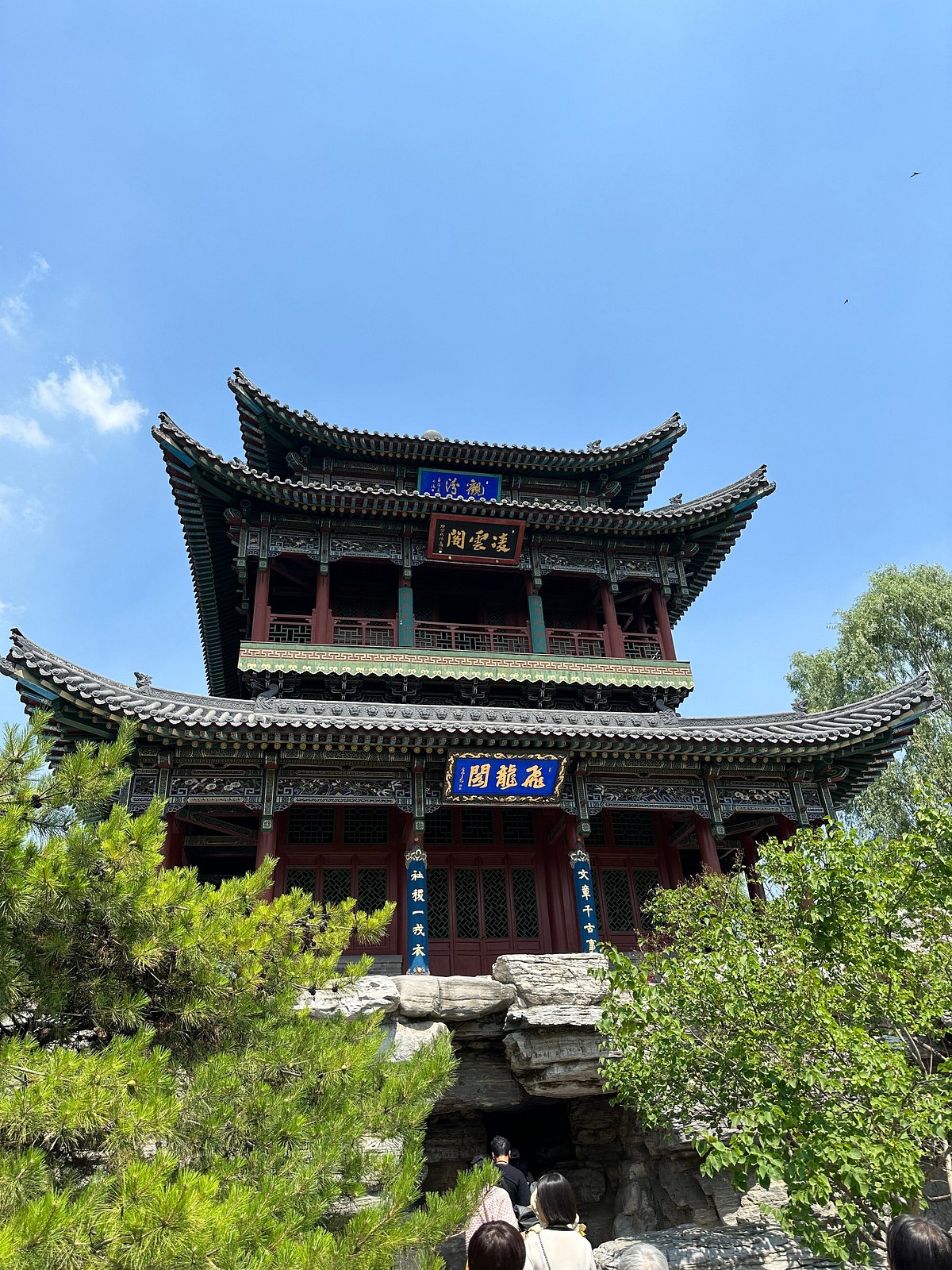
Jin Ci Temple.
1. The Saint Mother Hall (圣母殿)
At the heart of the Jinci Temple complex lies the Saint Mother Hall, a stunning architectural gem built in 984 AD. As one of the oldest structures on the site, this hall is dedicated to the worship of the goddess of motherhood. Visitors are often captivated by its intricate wood carvings and the vibrant murals that adorn the walls, depicting tales from ancient Chinese mythology. Make sure to spend time here to appreciate the craftsmanship that has stood the test of time.
2. The Ancient Cypress Tree
One of the most remarkable natural wonders of the Jinci Temple is the ancient cypress tree, estimated to be over 3,000 years old. This majestic tree not only serves as a living testament to the enduring beauty of nature but also offers a tranquil space for reflection amidst the bustling temple grounds. Take a moment to marvel at its grandeur and the history it symbolizes.
3. Exquisite Architecture and Carvings
Jinci Temple is renowned for its exquisite architecture, which showcases a harmonious blend of Daoist, Confucian, and Buddhist influences. As you wander through the complex, be sure to admire the various pavilions, shrines, and opera stages, all adorned with intricate stone and wood carvings. Look closely at the pillars, where you’ll find beautifully sculpted dragons that embody the spirit of ancient Chinese artistry.

Jin Ci Temple.
4. The Beautiful Gardens
The temple grounds are enveloped in sprawling gardens that provide a peaceful retreat from the outside world. These gardens are meticulously landscaped, featuring ancient trees, serene lagoons, and vibrant flora. Each season brings a new charm, especially in the summer when the gardens are in full bloom. It’s the perfect spot for leisurely strolls or capturing stunning photographs.
5. The Cultural Significance
Jinci Temple is not just a beautiful site; it holds immense cultural significance as a center of worship and art. The complex is steeped in legends and historical narratives, particularly related to the mother goddess and the ancestral worship of the Jin state. Engage with the history through the various plaques and signs throughout the complex, which provide insights into the temple’s storied past.
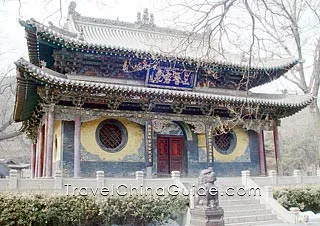
Jin Ci Temple.
6. Nearby Attractions
While Jinci Temple is a destination in itself, consider visiting nearby historical sites to enhance your cultural experience. The Wang’s Family Compound and Jiezitui Temple are both within a short distance, offering additional insights into the region’s rich history and architecture.
7. Practical Tips for Your Visit
- Opening Hours: The temple is open daily from 9:00 AM to 5:00 PM, so plan your visit accordingly to avoid the crowds.
- Getting There: Jinci Temple is approximately 24 km from Taiyuan, making it easily accessible by bus or car.
- Guided Tours: While English signs are available, consider hiring a guide for a more in-depth understanding of the temple’s history and significance.
- Photography: Bring your camera! The combination of architecture and natural beauty makes this a photographer’s paradise.
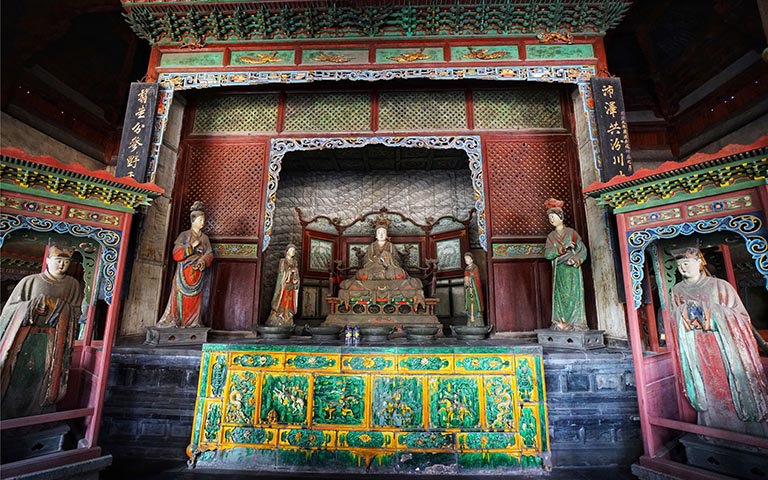
Jin Ci Temple.
Conclusion
A visit to Jinci Temple is a journey through time, offering a glimpse into the architectural brilliance and spiritual depth of ancient China. Whether you are an avid history buff or a casual traveler, the temple’s highlights promise an enriching experience that will linger in your memory long after your visit. Don’t miss the chance to immerse yourself in the tranquility and beauty of this stunning historical site.
Planning Your Visit: A Practical Guide
Your Essential Guide to Visiting Jinci Temple
Nestled in the lush surroundings of Lingshi County, Jinci Temple (晋祠) is a historical gem that promises an enchanting journey through Chinese culture and architecture. This ancient temple complex not only features stunning gardens and serene landscapes but also serves as a testament to the rich heritage of Buddhism, Taoism, and Confucianism. Whether you’re a history buff, an architecture enthusiast, or simply looking for a peaceful retreat, Jinci Temple offers a multifaceted experience. Here’s how to make the most of your visit.

Jin Ci Temple.
Getting There
Location: Jinci Temple is located approximately 25 kilometers from Taiyuan, the capital of Shanxi Province.
Transportation Options:
– By Bus: Regular buses run from Taiyuan to Lingshi County. The journey takes about 40 minutes, and the bus station in Taiyuan is conveniently located.
– By Car: Renting a car is a great option for those who prefer flexibility. The drive offers scenic views and takes around 30 minutes.
– Guided Tours: Many travel agencies offer guided tours that include transportation to the temple along with insights into its history.
Opening Hours
- Daily: 9:00 AM – 5:00 PM
- Note: Arrive early to enjoy the tranquility and avoid crowds, especially on weekends.
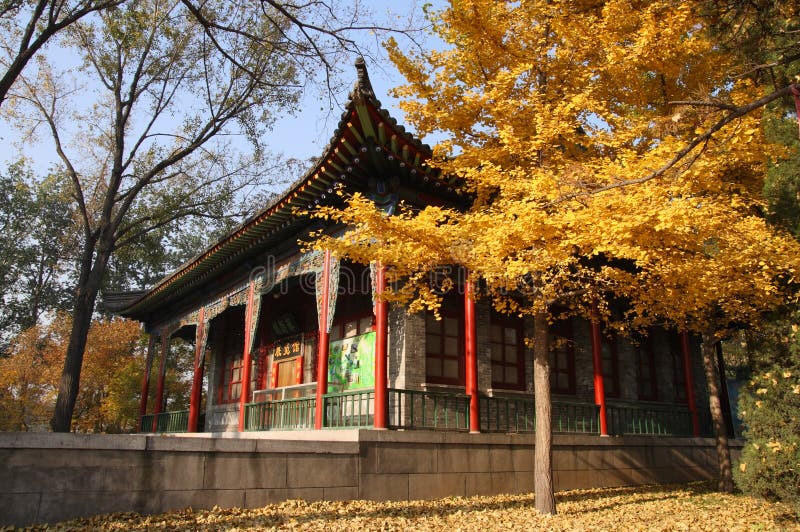
Jin Ci Temple.
Admission Fees
- General Admission: Approximately ¥50 (check for updates as prices may vary).
What to Explore
- Architectural Highlights:
- Saint Mother Hall: Built in 984 AD, this hall is the centerpiece of the temple and showcases exquisite carvings and ancient relics.
-
Pagodas and Pavilions: Wander through various structures that illustrate ancient Chinese architectural styles, including intricately carved wooden dragons adorning the pillars.
-
Natural Beauty:
- Gardens: The vast gardens surrounding the temple are perfect for leisurely strolls. Look for ancient trees, some over 3,000 years old, that add to the serene atmosphere.
-
Lagoons: The peaceful lagoons provide beautiful spots for reflection and photography, especially during the golden hours of sunrise and sunset.
-
Cultural Insights:
- Art and History: Inside the temple, you’ll find a wealth of art, paintings, and sculptures that narrate the history of the region and its spiritual significance. A basic understanding of Buddhism, Taoism, and Confucianism will enhance your appreciation of these artworks.
Tips for a Memorable Visit
- Time Your Visit: Weekdays tend to be quieter than weekends. Arriving early will provide a more peaceful experience.
- Local Guides: While English signage is available, hiring a local guide can enrich your understanding of the temple’s history and significance.
- Photography: The complex is a photographer’s dream. Capture the intricate details of the architecture and the natural beauty surrounding the temple.
- Amenities: Clean restrooms are available, and there are several food and souvenir stalls at the entrance. Try local snacks for a delightful culinary experience.

Jin Ci Temple.
Nearby Attractions
Extend your exploration by visiting other nearby sites:
– Wang’s Family Compound: A well-preserved historic site showcasing traditional Chinese architecture.
– Jiezitui Temple: A serene site dedicated to the revered figure Jie Zi, just a short distance away.
Conclusion
Jinci Temple is not just a historical site; it is a vibrant tapestry of culture, spirituality, and natural beauty. Whether you are wandering through its ancient halls or reflecting by the lagoons, a visit here is sure to leave you with lasting memories and a deeper appreciation for Chinese heritage. Be prepared to immerse yourself in a captivating journey of discovery!
Tickets: Prices, Booking, and Tips
When planning your visit to Jinci Temple (晋祠), a remarkable destination rich in history and culture, it’s essential to know the ticketing details to ensure a smooth and enjoyable experience. Below is a comprehensive guide to the ticket prices, booking options, and some helpful tips.

Jin Ci Temple.
Ticket Prices
- General Admission: Approximately 60 CNY (Chinese Yuan)
- Discounted Tickets: Reduced rates may be available for students and seniors, typically around 30 CNY. It’s advisable to carry valid identification to avail of these discounts.
Booking Information
-
On-Site Purchase: Tickets can be conveniently purchased at the entrance of the temple. The ticket office operates during opening hours, so plan your visit accordingly.
-
Online Booking: For those who prefer to secure their tickets in advance, online booking platforms may offer the option to purchase tickets. Check popular travel websites or local Chinese platforms, especially if you are traveling during peak seasons.
-
Guided Tours: Consider booking a guided tour that includes entry to Jinci Temple. Many tours provide detailed insights into the temple’s history and architecture, making your visit even more enriching.
Visiting Hours
Jinci Temple is open to visitors from 9:00 AM to 5:00 PM daily. It’s advisable to arrive early to fully explore the expansive grounds and avoid crowds, particularly during weekends and holidays.
Tips for Your Visit
-
Plan for a Few Hours: The temple complex is vast, featuring numerous halls, gardens, and historical artifacts. Allocate at least 2 to 3 hours to appreciate the beauty and tranquility of the site.
-
Best Time to Visit: The gardens are particularly stunning in spring and summer when the flowers are in bloom. However, the fall offers a picturesque landscape with vibrant foliage.
-
Photography: Bring your camera! The intricate architecture and serene gardens provide incredible photo opportunities. Just be mindful of any restrictions on photography inside certain areas.
-
Dress Appropriately: Since Jinci Temple is a religious site, visitors are encouraged to dress modestly. Comfortable walking shoes are also recommended, as you will be exploring various terrains.
-
Local Cuisine: After your visit, consider trying local dishes at nearby restaurants. The area around the temple offers a range of dining options that showcase Shanxi’s unique culinary traditions.
By following these guidelines, your visit to Jinci Temple will be both memorable and enlightening, allowing you to delve deeper into the rich tapestry of Chinese history and culture. Enjoy your journey!
How to Get There: A Complete Transportation Guide
Getting to the Majestic Jinci Temple
Visiting Jinci Temple (晋祠), a stunning historical site in Lingshi County, is a remarkable journey into the heart of Chinese culture and heritage. Nestled amidst beautiful gardens and ancient structures, this temple complex is easily accessible from various points in Shanxi Province, making it a must-see destination for anyone interested in history and architecture. Here’s your complete guide on how to reach this enchanting site.
From Taiyuan
By Bus:
– Travel Time: Approximately 40 minutes.
– Departure Point: Buses to Jinci Temple depart from the Taiyuan Long-distance Bus Station.
– Frequency: Buses run regularly throughout the day, typically every 30 minutes.
– Cost: A one-way ticket costs around 10-15 RMB (approximately $1.50).
By Car:
– Driving Distance: Jinci Temple is about 25 kilometers from downtown Taiyuan.
– Route: Take the G55 highway towards Lingshi County. Follow signs to Jinci Temple, which is well-marked.
– Car Rentals: Renting a car is a popular option for travelers wanting flexibility. Several rental services are available in Taiyuan.
By Taxi or Ride-Hailing Services:
– Travel Time: Around 30-40 minutes depending on traffic.
– Cost: Expect to pay around 80-120 RMB (approximately $12-18) for a one-way trip. Using apps like Didi Chuxing (the Chinese equivalent of Uber) can also be convenient.
From Pingyao
If you’re coming from the historic town of Pingyao, you can also make a day trip to Jinci Temple.
By Bus:
– Travel Time: Approximately 1.5 to 2 hours.
– Departure Point: Buses leave from the Pingyao Bus Station.
– Cost: Bus tickets typically range from 30-50 RMB (about $5-7.50).
By Car:
– Driving Distance: The distance from Pingyao is about 80 kilometers.
– Route: Head northwest on the S209 and follow the signs leading to Taiyuan, then onto Jinci Temple.
Nearby Attractions
Jinci Temple’s location makes it an ideal stopover when exploring other attractions in the region. Noteworthy sites include:
– Wang’s Family Compound: A historic architectural marvel just 3.5 kilometers away.
– Jiezitui Temple: Located about 1 kilometer from Jinci, this temple is another gem of ancient architecture.
– Zhensheng Town: A charming historic area, roughly 2.1 kilometers from Jinci Temple.
Tips for a Smooth Journey
- Plan Ahead: Arrive early to avoid crowds, especially on weekends and holidays.
- Check Bus Timetables: Although buses run frequently, it’s wise to confirm schedules, especially during peak travel seasons.
- Bring Cash: While many places in China are moving towards cashless payments, some local transport options may only accept cash.
- Language: While most signs are in Mandarin, you might encounter a language barrier. Downloading a translation app or carrying a phrasebook can be beneficial.
Final Thoughts
Jinci Temple offers not just a glimpse into ancient Chinese spirituality but also an opportunity to immerse yourself in the serene beauty of its gardens and architecture. Whether you choose to travel by bus, car, or taxi, the journey to this historic site is as rewarding as the destination itself. Enjoy your trip to one of China’s most enchanting temple complexes!
Local Cuisine and Accommodation Nearby
As you explore the historical and cultural depths of Jinci Temple, the experience can be beautifully complemented with local cuisine and comfortable accommodations in Lingshi County. Here’s a guide to ensure you enjoy the best of both worlds during your visit.
Culinary Delights in Lingshi County
When it comes to savoring authentic local flavors, Lingshi County offers a variety of dining options that showcase the rich Shanxi cuisine. Here are some must-try dishes and recommended eateries:
-
Shanxi Noodles (刀削面)
Known for their unique texture and flavor, these hand-sliced noodles are a staple in the region. Visit Lingshi Noodle House, a local favorite where you can enjoy them served in rich broth or stir-fried. -
Pingyao Beef (平遥牛肉)
This renowned delicacy features tender, flavorful beef, often served in a spicy sauce. Stop by Jinci Restaurant for a delightful serving, alongside a selection of other traditional dishes. -
Local Snacks
Don’t miss out on the delicious street food, including Suan Ni Bai Rou (Garlic Pork) and Tianjin Pancakes. The small stalls near the temple entrance offer fresh and affordable snacks perfect for a quick bite. -
Tea Culture
Engage in a traditional tea ceremony at one of the local tea houses. Yuan Feng Tea House not only serves a variety of teas but also offers a serene environment to unwind after a day of exploration.
Comfortable Stays Near Jinci Temple
After indulging in the local cuisine, a restful night is essential for recharging. Here are some accommodations that provide comfort and convenience near Jinci Temple:
-
Jinci Hotel
Located just a short drive from the temple, this hotel offers modern amenities and stunning views of the surrounding mountains. Guests appreciate its cleanliness and friendly service. -
Lingshi County Guesthouse
For a more local experience, consider staying at this guesthouse, which offers traditional decor and a cozy atmosphere. It’s an excellent choice for travelers looking to immerse themselves in local culture. -
Wang Family Compound Inn
This charming inn is situated close to the historic Wang’s Family Compound, making it perfect for history enthusiasts. It features comfortable rooms and a restaurant serving local dishes. -
Zhongguo Minju Yishu Hotel
This hotel combines modern comforts with artistic flair, featuring decor inspired by traditional Chinese art. It is conveniently located for easy access to both Jinci Temple and other nearby attractions.
Conclusion
A visit to Jinci Temple is not just an exploration of ancient architecture and serene gardens; it is also an opportunity to indulge in the vibrant culinary scene and find a cozy place to rest your head. Whether you’re savoring local delicacies or unwinding in a welcoming hotel, your experience in Lingshi County will surely be memorable.
Frequently Asked Questions
Frequently Asked Questions About Jin Ci Temple
1. What is Jin Ci Temple and why is it significant?
Jin Ci Temple, located in Lingshi County, Shanxi Province, is a revered historical site that dates back over 1,500 years. It is a complex of ancient structures showcasing a blend of Buddhist, Daoist, and Confucian influences. The temple is significant for its exquisite architecture, rich history, and tranquil gardens, making it a vital cultural heritage site in China.
2. How do I get to Jin Ci Temple from Taiyuan?
Jin Ci Temple is approximately 24 kilometers (about 15 miles) from Taiyuan, the capital city of Shanxi Province. You can reach the temple via public transportation, such as buses that run regularly, or by hiring a taxi or private car for a more comfortable experience.
3. What are the opening hours of Jin Ci Temple?
The temple is open daily from 9:00 AM to 5:00 PM. It is advisable to arrive early to avoid large crowds, especially on weekends and holidays.
4. What should I expect to see at the temple?
Visitors can explore a vast complex featuring ancient halls, beautiful gardens, and notable structures such as the Saint Mother Hall, built in 984 AD, and a 3,000-year-old cypress tree. The grounds are enriched with intricate carvings, sculptures, and a serene atmosphere perfect for photography and reflection.
5. Are there any facilities available for tourists?
Yes, Jin Ci Temple offers clean restroom facilities, including accessible options. There are also food stalls and souvenir shops outside the temple grounds, providing visitors with local snacks and mementos.
6. Is there an entrance fee to visit Jin Ci Temple?
Yes, there is an entrance fee to access Jin Ci Temple, but the cost is generally reasonable. The fee contributes to the maintenance of this historical site. It’s best to check for the latest pricing details before your visit.
7. Can I hire a guide at the temple?
Yes, there are guides available for hire at the entrance of Jin Ci Temple. They can provide valuable insights into the temple’s history and architectural features. However, English signage is available throughout the site, allowing for an independent exploration if preferred.
8. What is the best time of year to visit Jin Ci Temple?
The ideal time to visit Jin Ci Temple is during the spring (April to June) and autumn (September to November) months when the weather is mild, and the gardens are in full bloom. Visiting during these seasons allows you to enjoy the natural beauty of the temple grounds while avoiding the summer heat and winter chill.
Final Thoughts on Your Trip
As your journey concludes at the serene and historically rich Jinci Temple, take a moment to reflect on the tapestry of experiences that this extraordinary site has woven into your travels. Nestled in the tranquil landscapes of Lingshi County, Jinci Temple is not just a collection of ancient halls and gardens; it is a living testament to China’s profound history and spiritual heritage.
What to Cherish
-
Architectural Marvels: From the intricate carvings of dragons to the majestic halls that have stood for centuries, the architecture here is a vibrant echo of ancient Chinese philosophy. Each structure tells a story, inviting you to explore the artistry that defines this sacred space.
-
Natural Beauty: The expansive gardens and ancient trees, some over three thousand years old, provide a peaceful respite. These natural wonders enhance the spiritual ambiance, making it an ideal spot for reflection and rejuvenation.
-
Cultural Insights: Engaging with the history of Jinci Temple enriches your understanding of Buddhism, Daoism, and Confucianism—elements that have shaped Chinese culture for millennia. Take time to appreciate the significance of each shrine and the stories they hold.
Final Reflections
As you prepare to leave, remember that Jinci Temple is more than a destination; it is a gateway to understanding the heart of Chinese culture. Whether you spent hours wandering the grounds, capturing photographs of the stunning landscapes, or simply soaking in the tranquil atmosphere, each moment contributes to the rich mosaic of your travel experiences.
Embrace the memories you’ve created here and let them inspire your future adventures. Jinci Temple is a reminder of the beauty found in history, architecture, and nature—a testament to the enduring legacy of a civilization that continues to captivate the world. Safe travels as you continue to explore the wonders of China and beyond!